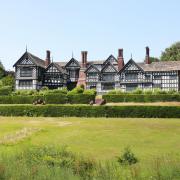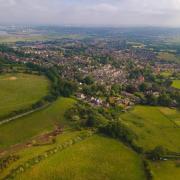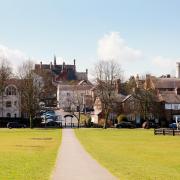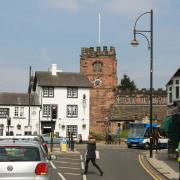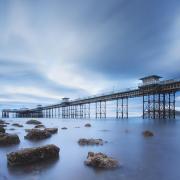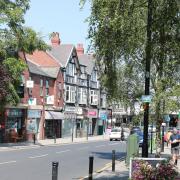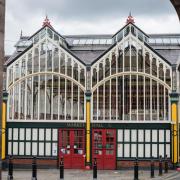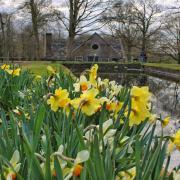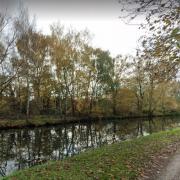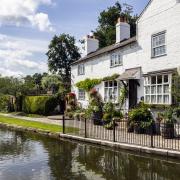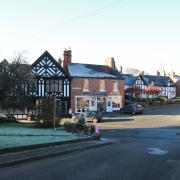Make a splash, dip a toe in or simply sit on the sand admiring the view. North Wales is full of beautiful beaches and we choose just a few of our favourites.

ABERSOCH
Where is it? On the south coast of the Llyn Peninsula, but facing east - that is, away from some of the more blustery prevailing weather.
Why is it so special? The long sheltered sandy beach has become very popular for watersports, including dinghy sailing, windsurfing and jet-skiing. This is a resort to which people return time and time again, and where those who can afford to do so will invest in a second home. Hence, large portions of Cheshire decamp to Abersoch for the summer, and find themselves well-served by the kinds of shops and restaurants they would expect at home. But it’s not just a summer destination. Abersoch’s position, tucked away with its ‘back’ to the weather, means you may well get some pleasant beach days well out of season. The cafes and restaurants are increasingly staying open beyond the traditional summer months, and you may snap up a few bargains as those shops have autumn sales.

BARMOUTH
Where is it? At the mouth of the Mawddach estuary, in the south west corner of the Snowdonia National Park.
Why is it so special? It’s got mountains, sand and sea. Barmouth’s delights were rhapsodised by William Wordsworth, who, after a visit, said in 1824: ‘We took a boat and rowed up its sublime estuary, which may compare with the finest in Scotland, having the advantage of a superior climate.
‘With a fine sea view in front, the mountains behind, the glorious estuary running eight miles inland and Cader Idris within compass of a day’s walk, Barmouth can always hold its own against any rival.’ Barmouth beach is immense, even at high tide - plenty of room for the kids to use up all their energy. The resort also boasts a micro-climate, being slightly warmer in winter and cooler in summer, and drier too - less than half the rainfall of the nearby Snowdonia peaks.

PORTHDINLLAEN
Where is it? A promontory on the north side of the Llyn Peninsula, close to the village of Morfa Nefyn.
Why is it so special? Portdinllaen is not just a very pretty little beach, it also seems to exist in a little bubble of timelessness. Perhaps one reason for that is the pub, the Ty Coch Inn, which nestles in the tiny fishing village at the end of the beach. Ty Coch is that rarest of things in the 21st century: a pub you can’t drive to. Vehicular access is for residents only. So you can either park up in Morfa Nefyn and walk along the sands, or park near the golf course and stroll across the course to the pub. We prefer the walk along the sands, which, as they are east-facing, are often sheltered from the prevailing weather. The beach shelves gently, there are rock pools to explore and, with that intriguing 200-year-old pub nearby, this is a beach on which to spend a long lazy day.

SHELL ISLAND
Where is it? Shell Island, or Mochras, is a peninsula just south of Harlech and to the west of Llanbedr.
Why is it so special? As the name suggests, you will find a good range of seashells washed up on the beach here. But the real novelty of Shell Island is that your visit, at least by car, is dependent on the forces of nature. The access route is a causeway across the estuary of the River Artro; tide tables showing safe crossing times are available to download from www.shellisland.co.uk. Once there, you will have a choice of 300 acres of camping land, making Shell Island the biggest camp site in the UK. But the site is sufficiently vast that campers must leave at 20 metres in between their tent and the next pitch. Tent pitched, enjoy views across Cardigan Bay, up towards the Llyn Peninsula and Snowdonia. There are three beaches, with the main beach at the south of the island running six miles down to Barmouth, and the north beach being used for dinghy sailing.

LLANDUDNO
Where is it? On a peninsula poking into the Irish Sea just north of Conwy.
Why is it so special? Nature and nurture combine to make Llandudno’s North Shore one of the great British seaside resorts. Nature gave it an impressive arc of sand and shingle, curving between the two headlands of the Great Orme and Little Orme. The nurture came in the form of grand seaside architecture arranged along that long curve, and preserved sensitively to this day. There is a pier too: stroll to the end of it and get a different perspective on that beach, and all the pastel-coloured hotels beyond. In Llandudno, you can sit on the beach, stroll along the prom, watch a Punch and Judy show or head for the top of the Great Orme (by foot, bus, tramway or cable car) where the view down towards that beach is absolutely spectacular. Oh, and there’s another beach...the quieter West Shore, where Alice Liddell (muse of Lewis Carroll) holidayed as a child.

LLANDWYN
Where is it? A long arcing bay leading to a narrow promontory which is very nearly the most southerly tip of the island of Anglesey. Most people get to it by driving through Newborough Forest to a large car park behind the sand dunes.
Why is it so special? Llanddwyn Bay has a long sandy beach which, on the right day, has striking views across the sea to Snowdonia. It is a very pleasant plod through soft sand to Llanddwyn Island itself, which has several picturesque little coves and lots of wildlife.
But be aware that high tides can cover the path onto Llanddwyn Island for an hour or so. If that is the case, try walking instead onto the next stretch of beach towards Malltraeth. It’s one of the most deserted and beautiful strands you will find.

CRICCIETH
Where is it? Seventeen miles south of Caernarfon on Cardigan Bay.
Why is it so special? You can’t beat a beach with a castle, and Criccieth has not one but two Blue Flag beaches plus the ruins of a castle standing in pride of place on a rocky outcrop between the two. If you don’t like a pebbly beach, Criccieth may not be your cup of tea. But a bit of stone underfoot is surely a small price to pay. To the west of the castle is Marine Beach, safe for bathing and family fun. To the east of the castle is another pebbly beach which boasts views of the Welsh mountains, the Dwyryd estuary and the curve of the bay. At low tide, there are rock pools to explore.~ Criccieth’s history goes back to the building of the castle around 1230. It was in the Victorian era, with the arrival of the railways, that Criccieth developed as a popular holiday destination, though never one that embraced the tackier attractions which have ruined some resorts.









